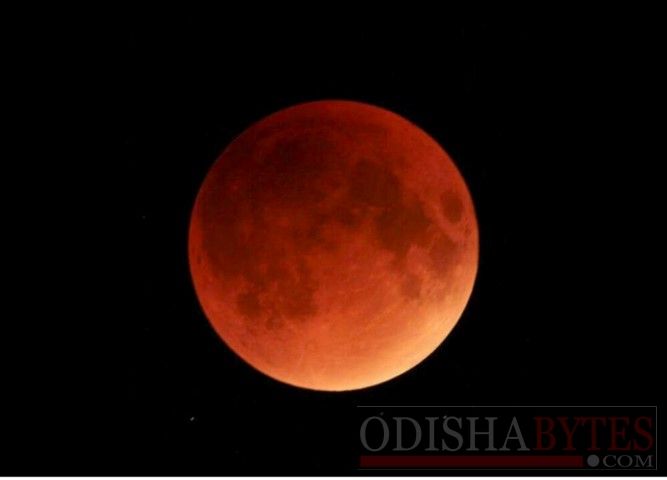Will Lunar Eclipse Tomorrow Effect Surge Of Cyclone Yaas In Odisha? Know Your Answer

Bhubaneswar: Cyclone Yaas is expected to cross land between Dhamra and Chandbali coast in Odisha as a very severe cyclonic storm by the morning of May 26, which is also a full moon day.
Incidentally, May 26 will also witness two celestial events, the first total lunar eclipse of 2021 and a Super Moon.
Effect On Cyclone?
This conjunction of events has raised a question: Will the lunar eclipse have any effect on the cyclone surge? The weathermen, however, assured otherwise.
“Usually, tides are higher when the moon is full. But, full moon and total lunar eclipse have no relations with cyclone. A cyclone occurs when there is a low pressure. For higher tides, it is difficult for discharge of water to the sea. As cyclonic rain is not continuous, there is a little chance of flooding here in coastal Odisha,” said Dr Subhendu Pattnaik, Deputy Director of Pathani Samanta Planetarium.
The total lunar eclipse will be visible in East Asia, Australia, the Pacific ocean, America and some parts of the Atlantic and Indian oceans.
Rare Confluence
The rare confluence of these two celestial events has prompted many to call this eclipse a Super Blood Moon. After the lunar eclipse, the rare Super Blood Moon will be seen in the eastern sky on May 26.
The eclipse will not be visible in Odisha as well as in India, informed Pattnaik.
Just before moonrise, the people in eastern India can see the very last part of the lunar eclipse, he added.
Eclipse Timings
“The total lunar eclipse on May 26 can be viewed with the naked eye, where ever it is night time. The first stage will start when the moon enters Umbra at 3.14 pm Indian Standard Time. The maximum eclipse will be between 4.41 pm and 4.55 pm when the moon will slowly emerge from the shadow. The partial eclipse will end at 6.22 pm. As it will be day time and the moon will be below the horizon, we Indians will not be able to see the eclipse,” said Pattnaik.
“What we will actually see on May 26 evening is a dim red/orange coloured moon which is abut 7% bigger in size compared to average size of a full moon. As a full moon is occurring with moon at a distance of 3.58 lakh km from Earth, it will appear 7% bigger in size and it will be red/orange in colour for about an hour in evening during Total Lunar Eclipse,” he added.
Next Eclipse
“The next Lunar Eclipse which will be a partial one will be visible to India on November 19 this year,” he informed.
The Pathani Samant Planetariun has made online live viewing of the event from 3.30 pm on May 26. Students and teachers will be taking part in the discussion and their queries will be answered, he said.
Safe To Watch
Notably, lunar eclipse only occurs on a full moon night. A full lunar eclipse occurs when the Earth passes directly in front of a full moon.
Unlike solar eclipse, lunar eclipses are safe to watch with the naked eye without any protectors or special glasses.

Comments are closed.